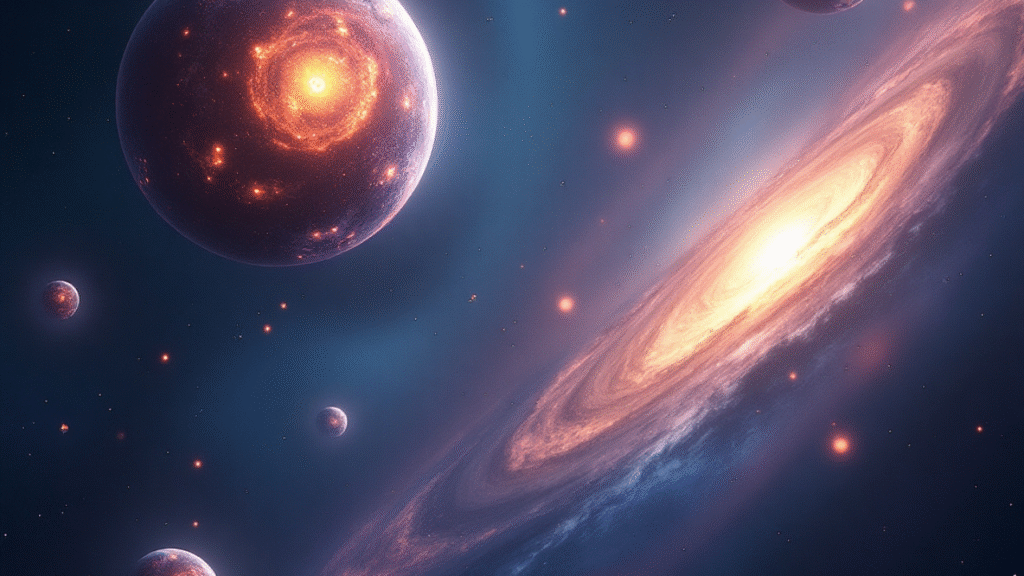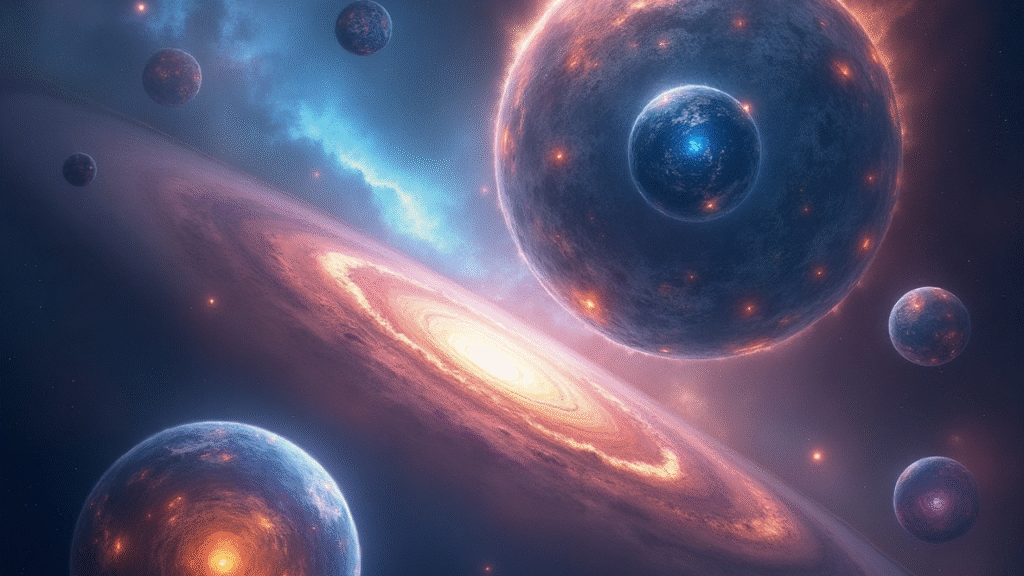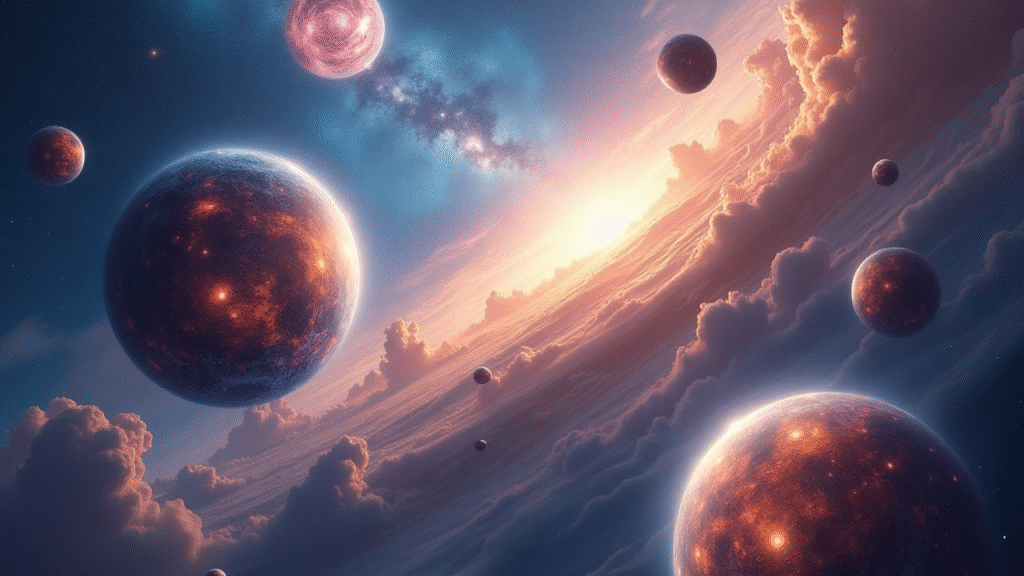For centuries, humans have gazed at the stars and wondered whether we are truly alone in the universe. But modern science has raised an even more mind-bending question: what if our universe is just one among countless others? This concept—the multiverse—has evolved from speculative philosophy to a serious topic in quantum physics, cosmology, and science fiction. Today, we put multiverse theories under the microscope, exploring where hard science ends and where imagination begins.
What Exactly is the Multiverse?
At its core, the multiverse theory suggests that our universe, with its galaxies, planets, and physical laws, may not be unique. Instead, it could be one of many—perhaps infinitely many—universes. Each universe might follow slightly different rules of physics, contain alternate versions of ourselves, or be completely alien in structure.
The idea isn’t just fantasy; it arises naturally from certain branches of quantum mechanics, string theory, and cosmology. Yet, it remains one of the most debated topics in modern science.

Quantum Physics and the Multiverse
The strongest scientific foundation for multiverse theories comes from quantum physics, particularly the many-worlds interpretation (MWI) of quantum mechanics.
- In classical physics, events happen in a straightforward, predictable way.
- But in quantum mechanics, particles can exist in multiple states at once—a phenomenon known as superposition.
- When we measure or observe the system, we see only one outcome.
The many-worlds interpretation, first proposed by physicist Hugh Everett in 1957, suggests that all possible outcomes actually occur, each in a different universe. For example, if you flip a coin, in one universe it lands heads, and in another, it lands tails. In fact, every quantum event could create a branching of universes, leading to an unimaginably vast multiverse.
Cosmology and Bubble Universes
Quantum mechanics isn’t the only branch of science pointing toward the multiverse. Cosmologists studying the origins of the universe through the Big Bang theory and cosmic inflation have found hints that our universe may be part of a larger system.
- Cosmic Inflation: Shortly after the Big Bang, the universe expanded faster than the speed of light. Some theories suggest this process could have created multiple “bubbles” of space-time.
- Each bubble could represent a separate universe with its own physical laws.
- Our universe would then be just one bubble in a cosmic foam of many.
This “bubble universe” model is one of the most popular scientific versions of the multiverse concept.

String Theory and Extra Dimensions
Another scientific doorway to the multiverse comes from string theory, a leading candidate for a “theory of everything.” String theory proposes that the fundamental building blocks of nature are not particles but tiny vibrating strings.
The mathematics of string theory naturally allows for many possible configurations of universes—each with different physical constants and dimensions. Some physicists estimate that the number of possible universes in this framework could be as high as 10^500. While this sounds absurdly large, it reflects the mathematical richness of string theory.
Science Fiction and Parallel Worlds
While scientists debate equations and cosmological models, science fiction writers have been exploring the multiverse for decades. Stories about parallel universes, alternate timelines, and mirror realities have captured the imagination of audiences worldwide.
- In Marvel’s Doctor Strange or Spider-Man: Into the Spider-Verse, characters travel across alternate dimensions.
- TV series like Rick and Morty poke fun at the absurdity of infinite universes.
- Classic novels such as Philip K. Dick’s “The Man in the High Castle” explore alternate histories, imagining what the world would look like if key events had turned out differently.
Science fiction doesn’t just entertain—it also pushes people to think critically about the nature of reality, free will, and identity in a multiverse context.
The Simulation Hypothesis: Another Layer of Speculation
Closely tied to multiverse thinking is the simulation hypothesis—the idea that our entire universe might be a computer-generated simulation. If this is true, then what we call the multiverse might simply be different programs running on an advanced computer.
While highly speculative, this concept raises deep philosophical questions: if our universe is simulated, does that make others equally real? Or are they just lines of code?

Challenges and Criticisms of Multiverse Theories
Despite their appeal, multiverse theories face significant criticism in the scientific community.
- Lack of Testability – A core principle of science is falsifiability. If multiple universes exist beyond our observable horizon, how can we ever test or confirm their existence?
- Occam’s Razor – Many scientists argue that multiplying universes infinitely to explain reality is less elegant than assuming one universe with unknown but discoverable rules.
- Philosophical Concerns – Some critics argue that the multiverse is less a scientific theory and more a philosophical or metaphysical concept.
In short, while the multiverse debate is fascinating, it sits at the edge of what science can currently handle.
Multiverse in Popular Culture vs. Science
It’s important to distinguish between scientific multiverse theories and their portrayals in popular culture.
- Science: Focuses on quantum mechanics, cosmology, and string theory.
- Fiction: Often dramatizes the idea for storytelling—multiple versions of a character, time travel, or alternate worlds with drastically different histories.
Both perspectives are valuable: science grounds the concept in mathematics and observation, while fiction uses it to explore human imagination and creativity.
Why the Multiverse Matters
Even if we never confirm the existence of parallel universes, exploring the idea matters for several reasons:
- Expands Human Perspective: It challenges us to think beyond the limits of our own universe.
- Drives Scientific Inquiry: Questions about the multiverse push physics and cosmology toward deeper theories.
- Inspires Creativity: Writers, artists, and filmmakers use the multiverse as a canvas for exploring alternate realities and human choices.
Final Thoughts
From quantum mechanics and cosmic inflation to string theory and science fiction blockbusters, the multiverse captures both our scientific curiosity and our imagination. Whether it turns out to be a profound truth about reality or just an elegant thought experiment, multiverse theories remind us of the infinite possibilities that lie beyond what we can see.
As science progresses, we may one day get closer to answering the ultimate question: Are we living in the only universe—or just one of many?





